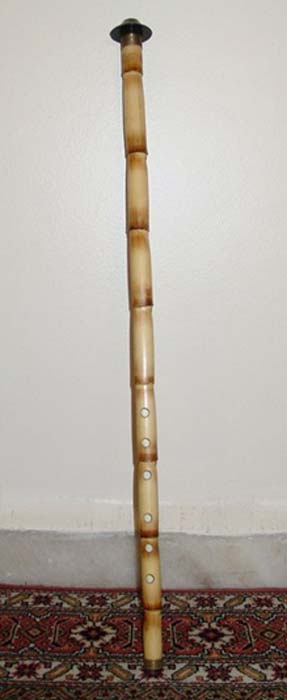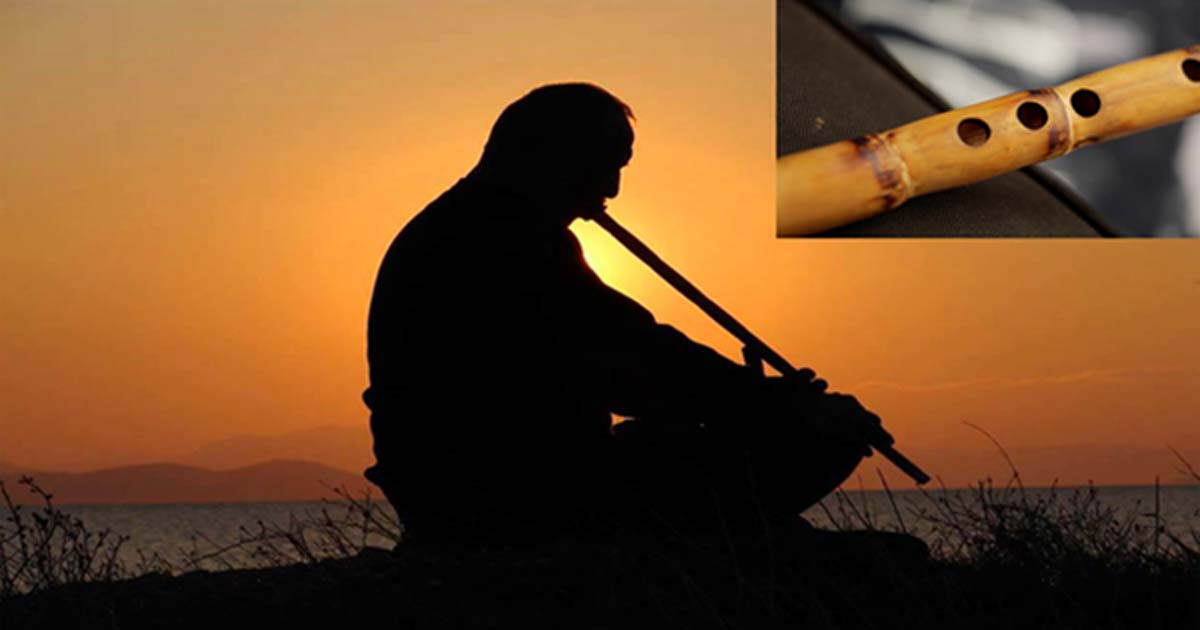Sweet Ancient Melodies of the Ney: One of the Oldest Musical Instruments Still in Use
For proof that the ney (also spelled nay) is one of the oldest musical instruments still in use, you need look no further than the great Sumerian city of Ur. Archeologists have found the delicate flute-like instruments in excavations of the ancient city. But if you are still not convinced of the ney’s authenticity, you need only to behold the Great Pyramids of Giza, inside of which there are paintings depicting Egyptians playing the ney, perhaps to the tune of a funeral dirge. By all accounts, the ney has been in use for at least 4,500 years, perhaps even longer. The instrument is still played today by musicians from Morocco to Pakistan and from Bulgaria to Ethiopia.

Woman playing the Ney in a painting from the Hasht Behesht Palace in Isfahan, Iran, 1669. (Public Domain)
Shepherds, Folk Musicians, and Minstrels
The ney holds a special place in the hearts of Iranians and one can find many ancient documents discussing the instrument. Its simple design and sweet sound made it a favorite of shepherds, wandering folk musicians, and court minstrels.
- Song of Seikilos: Oldest Known Musical Composition Lay Hidden on a Flower Stand in Turkish Garden
- Musical Monk: Guido of Arezzo and His Impact on the History of Music
- British Library intern finds earliest known piece of polyphonic music
With the onset of Islam, the ney was used to perform religious hymns, especially for the Sufis. Many people today associate the ney with Sufism. This connection was expressed by the Persian poet Jalal ad-Din Muhammad Rumi in part of the opening of his poem ‘Masnavi’:

Double-page illuminated frontispiece, 1st book (daftar) of the Collection of poems (Masnavi-i ma'navi), 1461 manuscript. (Public Domain)
Listen to this Ney when it narrates
it complains from the separation:
"Ever since I was cut from the rushy bed,
men and women have weeped from my wail
Whoever is kept away from his source
he again looks after the time of his being united
I wailed in each gathering.
I joined the happy ones and sad ones
Each one befriended me through his own thought,
but no one could find my inside secrets.
My secret is not far from my lament
but, no eye and no ear can see and hear it."
The lament of Ney is a fire.
who has not this fire be perished. (Rumi, 1999)
Making and Playing the Ney
In ancient times, the ney was made out of a hollow reed or piece of cane. The name of the instrument derives from an old Persian word for reed. Centuries later, neys were constructed out of wood, bone, or horn. Today, neys are made out of metal or plastic. Usually, neys have five or six finger holes. Sometimes, a ney will include a seventh hole on the back of the instrument to be opened and closed by the thumb. A skilled player can reach as many as three octaves. One can play a ney by “putting the mouth to one end of the flute and blowing in a somewhat oblique direction to the tube. The air bounces off one inner side of the flute and produces the sound, somewhat like blowing over a bottle” (MidEast Web, 2017)

A giant reed. (Public Domain)
Neys come in different lengths, each one tuned to a specific pitch. A devoted or professional ney player has a set of neys to use depending on the key of the song. A set usually includes seven flutes but could hold as many as 13. Each length of ney has a name based on the instrument’s second note, the note that sounds when the first hole is left uncovered. “In the typical Ney, the note is ‘D’. It is usually called by the Turkish name, which is ‘Dokah’. For the Dokah Ney, when all the holes are covered, the basic note is 'C'” (Hazim, 2017).
- The Mystical Pentatonic Scale and Ancient Instruments, Part I: Bone Flutes
- Ancient Irish Musical History Found in Modern India
- The Origin of Music

Turkish ney (with its başpare), kız ney version. (CC BY-SA 3.0)
Arabian ney musicians traditionally play shorter neys and their music has a rhythmic quality. This reflects the instruments venerated pastoral origins. In Turkey, another country where the ney is still popular today, the ney is longer and its music is played in a smooth, flowing fashion.
Centuries ago, the famed Turkish Sufi sect, the Mevlevi Order (Whirling Dervishes) adopted the ney as the principle instrument in their Sema ceremony. The Sema ceremony is a spiritual service in which a devotee evokes a near trance-like state by performing a spinning dance.
Top image: Farsi Ney (flute): Khodavanda Javani Ham Be Sar Raft. (YouTube Screenshot) Insert: close up of a professional Arabic ney. (CC BY-NC-SA 2.0)
Sources:
Hazim, Abdel. "Ney, Nai, Nay." Instruments of the Middle East. Belly Dance Museum, 2017. Web. http://belly-dance.org/ney.php
MidEast Web. "The Nay (Ney)." Middle East Musical Instrument. MidEast Web, 2017. Web. http://www.mideastweb.org/culture/ney.htm
Rumi. "NEY The Sound of Longing." NEY, The Cane Flute. Angel Fire, 18 Apr. 1999. Web. http://www.angelfire.com/pe/neyflute/index2.html
Sout Azin Co. Ltd. "Instrument Details: Ney." Farabi School. Sout Azin Co. Ltd., 2017. Web. http://farabisoft.com/Pages/FarabiSchool/InstrumentsDetails.aspx?lang=en&PID=4&SID=25

















